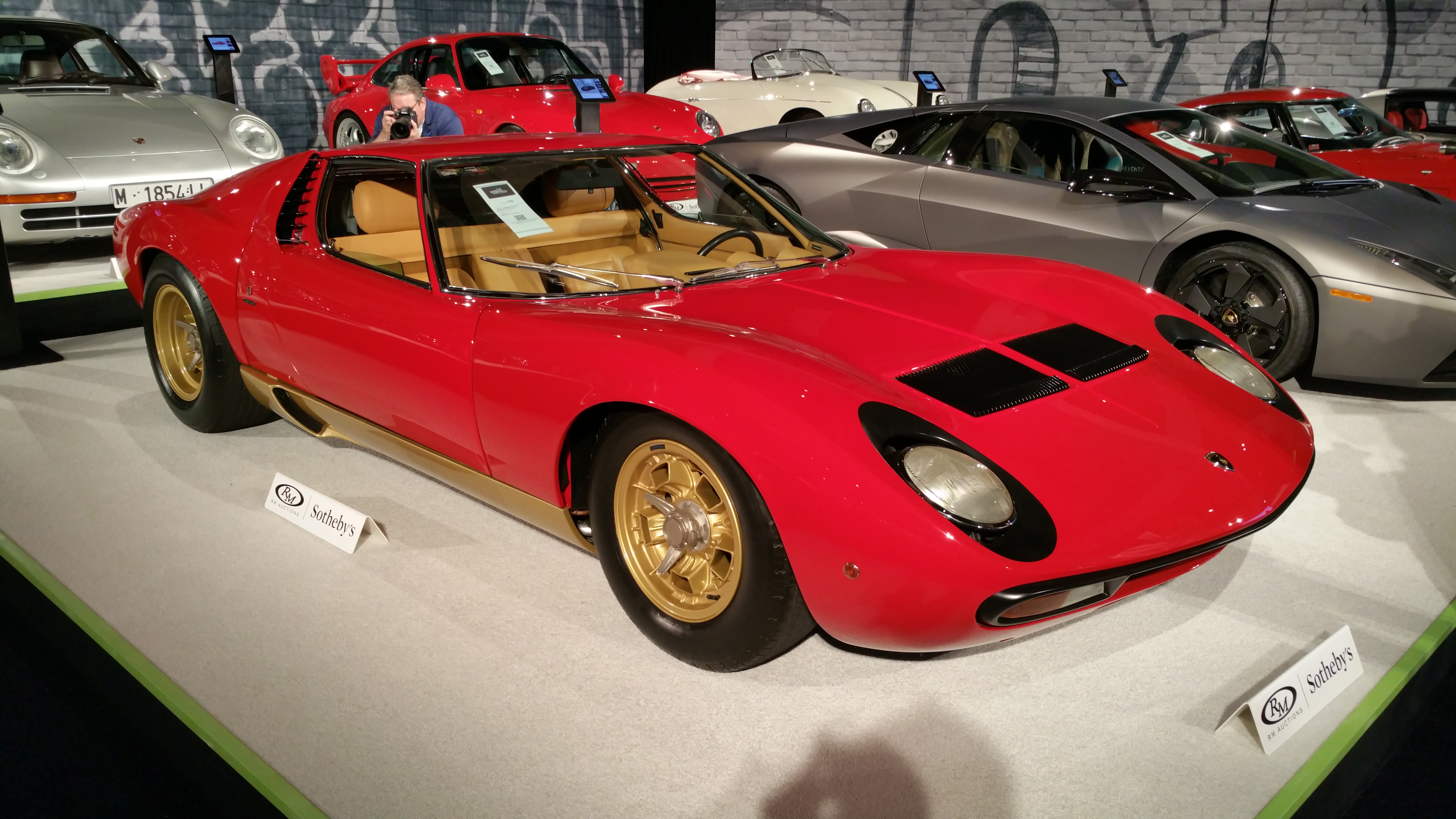-
Insurance
InsuranceAbout our productsLearn about insuringGet a quote Get current values, historical values, model history and more.
-
Valuation
ValuationHagerty valuation toolLook up a vehicle value Get current values, historical values, model history and more.
-
Events
EventsHagerty official eventsHagerty ClubhouseEvent calendar
-
Entertainment
EntertainmentMore to explore
- Portal login
1971 Lamborghini Miura
P400 S Coupe 3.9 L
Vehicle values by condition
Fair
Condition 4
£1,000,000
#4 cars are daily drivers, with flaws visible to the naked eye. The chrome might have pitting or scratches, the windshield might be chipped.
Good
Condition 3
£1,300,000
#3 cars could possess some, but not all of the issues of a #4 car, but they will be balanced by other factors such as a fresh paint job or a new, correct interior.
Excellent
Condition 2
£1,600,000
#2 cars could win a local or regional show. They can be former #1 cars that have been driven or have aged. Seasoned observers will have to look closely for flaws.
Concours
Condition 1
£1,800,000
#1 vehicles are the best in the world. The visual image is of the best car, unmodified, in the right colours, driving onto the lawn at the finest concours.
Insurance premium for a
1971 Lamborghini Miura P400 S Coupe 3929
valued at £1,300,000
£4832.45
/ year*
History of the 1966 - 1971 Lamborghini Miura

1966 - 1971 Lamborghini Miura
The Lamborghini Miura is generally considered to be the world’s first supercar. Other candidates, especially the Mercedes-Benz 300SL Gullwing have their adherents, but they tend to be rather conservative in appearance, or barely-disguised race cars, like Ford’s GT 40.
The Miura is unapologetically extravagant, and perhaps its true conceptual ancestor is the supercharged Auburn Speedster of the early 1930s. That too was absurdly fast, compared to standard cars of the day, but its over-the-top styling and dazzling colors also gave much pleasure to people who just stood and stared at it – and still do. The Miura’s specifications are still noteworthy today: a 350-horsepower DOHC V-12, and 180 mph top speed, and one will still draw a crowd, wherever it is parked.
Lamborghini eased into performance car production with the conservative 350 GT of 1964, but nobody was expecting the Miura when the doors to the 1966 Geneva Motor Show opened. Named after a famous Spanish breeder of fighting bulls, it fits the marque’s raging bull emblem to a T. The orange-red, mid-engine coupe drew crowds throughout the show and even more acclaim a few months later, when it was adopted as the course car for the Monaco Grand Prix, with local hero Louis Chiron waving the checkered flag out of the window.
The original 1966 Miura was a product of passion and engineering excellence. The designers, Giampaolo Dallara, Paolo Stanzini and Bob Wallace were in their 20s. Dallara and Stanzini were engineers and Wallace an expert Maserati mechanic. They all admired Colin Chapman’s lightweight unitised construction, and Eric Broadley’s mid-engined Lola, which had evolved into the Ford GT40. Together with designer Marcello Gandini they designed the Miura with its transverse V-12 engine, complex aircraft-quality construction, front and rear clamshells and stunning good looks.
Miura production can be divided into three phases. The original Miura P400 evolved into the P400S (Spinto) in 1968, with slightly better interior and ventilated disc brakes on the late cars. A roadster was toyed with (one built), but Wallace had other ideas. He wanted to go racing. The original 1970 Jota model was a one-off test bed to see if a competition car would fit into the FIA’s Appendix J. The result was a complete racing car, with an aluminum semi-monocoque shell riveted over a steel chassis. Horsepower was increased to 440 and weight trimmed to 1,784 pounds.
Wallace reused the power train of the Miura with all the third-generation, 1971 SV (Spinto Veloce) upgrades. The lubrication systems for the engine and transmission were separated, the chassis was stiffened, the headlight eyebrows disappeared, the rear track was widened and the wings flared. The rear suspension wishbones were extended 1.5 inches and moved to the top of the frame instead of beneath it, the rear tires were widened from seven inches to nine inches and the wheel arches bulged to cover them. However with the prototype Countach now on the scene, the Miura SV was practically ignored at the 1971 Geneva Auto Show.
About five SV Miura’s were upgraded to SVJ – “J” for Jota modifications in the early 1970s and they represented the end of a remarkably innovative and exciting design.
Today the Miura is an extremely collectable motor car. The most valuable are the later cars, with true Jota modifications adding a significant premium. Period alternatives are the Ferrari 365 GTB/4 Daytona, the Maserati Ghibli 4.9 SS, the Porsche 911 2.7 RS and the Aston Martin DB6.
All 1971 Lamborghini Miura body types
| Year | Make | Model | Submodel | Body Type | Engine size | Average value |
|---|---|---|---|---|---|---|
| 1966 | Lamborghini | Miura | P400 | Coupe | 3.9 L | £ 869,000 1,100,000 1,400,000 1,600,000 |
| 1966 | Lamborghini | Miura | P400 S | Coupe | 3.9 L | £ 1,000,000 1,300,000 1,600,000 1,800,000 |
| 1971 | Lamborghini | Miura | P400 SV | Coupe | 3.9 L | £ 1,700,000 2,100,000 2,400,000 2,700,000 |
Hagerty Newsletter
Get your weekly dose of car news from Hagerty UK in your inbox

ADVERTISEMENT